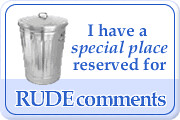
This weekend I'm kicking off our Baby Sign Language education. The first "word" I've chosen for Katen is Milk.
Click on the word to see how we sign "Milk."
Click on the word to see how we sign "Milk."
This is a word that we can use, repeat, and practice often so I felt it was an appropriate for her first. Now if I can teach the ladies at daycare to do it we'll really be in business. I doubt they'll humor me but it's worth a try.
Why am I teaching Katen Sign Language?
Why am I teaching Katen Sign Language?
1. First and foremost, it's something that Katen and I can do together. As a working mother I want to make the most of my time with her and this helps us to interact with eachother in a meaningful way.
2. It will help us as parents to understand the wants and needs of our baby, and decrease overall frustration for her. Using baby signing enables a baby to convey what she wants and needs. Research indicates that if a baby can communicate what she wants and needs – even if the parent must say “no” in response – the baby will know that she was understood and experience less frustration. Reduced frustration results in less crying and a much happier baby. (especially as she moves into the frustrating days of toddlerhood).
3. Enhance Katen's language skills. A common myth about baby signing is that a child who is taught baby signing will choose to use signing over verbal speech. The opposite is true. Not only will a baby choose verbal speech over signing, but signing will increase baby’s verbal abilities.
4. Increase our little pickle's IQ. (As if she isn't a smart cookie already.) Results taken from a longitudinal study revealed a 12-point difference in IQ scores when babies who used signing were compared to babies who did not sign. Babies who signed had IQ scores that were almost one standard deviation above those who did not. That is a big leap,
Here are some tips that I've learned so far:
Choose a few signs to start. The best signs to start with are MILK, MORE and EAT since the signs are very different from each other and are easy for babies to make.
Nest learn signs for basic needs since you'll use those words often. Eating, sleeping, personal hygiene, and things your baby is interested in all make great things to sign. Try APPLE, BANANA, SLEEP, CHANGE (as in diaper change), and BATH.
Show the sign in context. Show the sign while you are interacting with the concept or object. For example, you can sign milk while feeding your baby a bottle or while nursing. Or, if your baby eats, sign EAT while your baby eats.
Say the word as you sign and emphasize it. Don’t think signing means a lifetime of silence. Actually, it is the opposite. Parents who sign find that they talk more with their child. Talk directly to your child. Speak clearly and emphasize the word or words you are signing so that your baby gets the connection between the word and the sign and the action or concept. That three-way connection is important to developing your communication.
Practice often. A key to success is using the signs you choose every time you engage in the activity or say the word. Every time you eat, use the EAT sign and use it frequently during the eating process. Once is not enough since babies need to see things hundreds of times to learn. So, say “We’re going to EAT. Do you want to EAT?” And then as you eat, say “Let’s EAT another bite of cereal.” Parents who are successful say that they sign often. It is less important to know a lot of signs than it is to use the signs you know.
...and Here are some of the resources that I'm using in case anyone else wants to give it a shot:
CafeMom.com - this is where I can chat with other Moms teaching baby sign language
BabyCenter - another chat resource
So... we'll see how this goes. I'll be sure to post updates. Wish us luck!




No comments:
Post a Comment
Let us know what's on your mind. We'll allow anonymous comments as long as people use it appropriately.